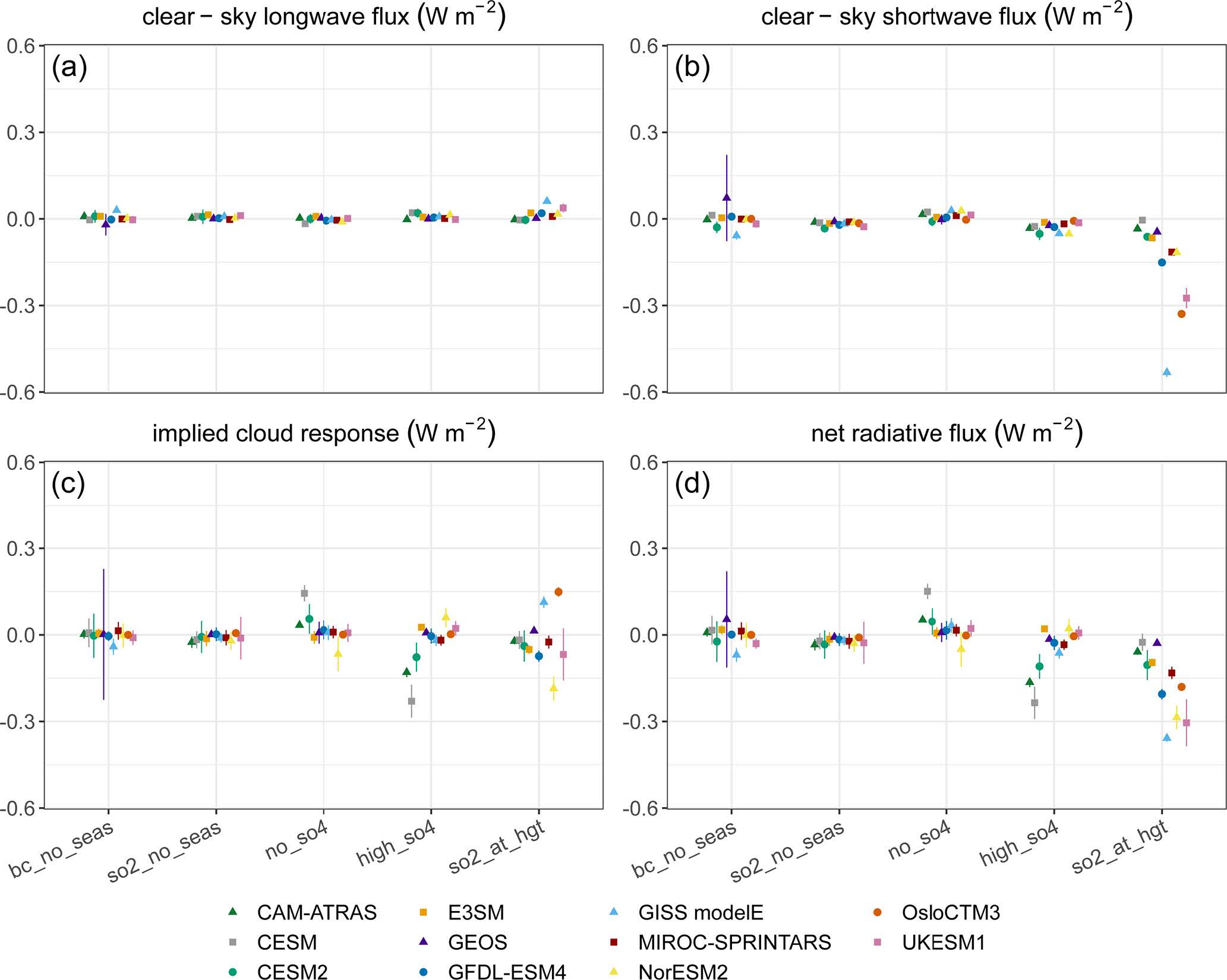Sulfur Dioxide Emission Height Reveals Uncertainty in Radiative Forcing Across Earth System Models

The Inco Superstack in Sudbury, Ontario, is the tallest chimney in Canada. Large-scale mining and smelting began in this area during the late 1880s, and it was the tallest smokestack in the world at the time. Image courtesy of P199/CC-BY-SA-3.0.
The injection height of sulfur dioxide into the atmosphere is not consistent across models and yields substantial variation in radiative forcing and aerosol dynamics.
The Science
Anthropogenic emissions of aerosols and precursor compounds are known to significantly affect the energy balance of the Earth–atmosphere system, alter the formation of clouds and precipitation, and have a substantial impact on human health and the environment. Sulfur dioxide (SO2) is a key air pollutant responsible for acid rain and human health impacts and has a substantial effect on climate change through the formation of cooling aerosols. Earth system and chemistry models are important tools for studying the impact of such emissions on humans and the Earth. However, these models do not consistently or accurately define some key emission characteristics. The study found that model assumptions about the effective emission height—the height at which SO2 emission plumes disperse into the atmosphere—can have a large impact on model results, including surface SO2 concentrations and the amount of sunlight reflected into space.
The Impact
Assumptions on emission height are not standardized across models and can have a significant impact on model results. These assumptions are a “hidden” source of inter-model variability and may be leading to bias in some climate model results, particularly in radiative forcing responses, surface gas concentrations, and aerosol dynamics. This points to a need for clear reporting of model assumptions, standardized guidance on how to incorporate emission height into models, and better regional and global data, particularly for stack height and emission thermal plume rise. The study additionally found that the fraction of SO2 converted to sulfate within emission plumes, another uncertain characteristic, also had an impact on model results.
Emissions height furthermore serves as a novel diagnostic to probe model responses to fundamental changes in emission characteristics. The researchers found that models varied substantially in their response to emissions higher in the atmosphere, which indicates a need for improved fundamental understanding of SO2 chemistry, transformation, and transport within the atmosphere.

Figure 1. Absolute difference (perturbation – reference) of global mean (a) clear-sky longwave radiative flux, (b) clear-sky shortwave radiative flux, (c) implied cloud response (which is the net forcing minus the sum of clear-sky longwave and shortwave flux), and (d) net radiative flux averaged over the years 2000–2004 (NorESM2 averaged over 2001–2005). Colors depict particular model results, see the legend and interannual variability (±1σ) is shown as thin lines.
Summary
Earth system models are essential tools for studying the effects of human-made emissions on the Earth–atmosphere system. While overall magnitudes of emissions will affect model results, it is not well quantified how sensitive models are to other aspects of emissions data. The Emissions Model Intercomparison Project (Emissions-MIP), coordinated by researchers at Pacific Northwest National Laboratory with contributions from modeling teams around the world, examined how selected emissions-related properties affected results across 11 global chemistry and Earth-system models, including emission seasonality, emission height, and assumed fraction of SO2 emitted as sulfate aerosol.
The work found that the assumed height of SO2 injection had the largest overall impact, particularly on global mean net radiative flux (Fig. 1), the balance between incoming and outgoing energy at the top of the atmosphere (up to 0.35 W m−2 of additional cooling), and the concentration of SO2 at the Earth’s surface (up to 59% reduction). These findings point to a need for better information on emission height, which includes both smokestack height and subsequent thermal plume rise. While regional models often include plume-rise parametrizations, this is not the case in global models.
Publication
- Ahsan, H. et al. “The Emissions Model Intercomparison Project (Emissions-MIP): Quantifying model sensitivity to emission characteristics.” Atmospheric Chemistry and Physics 23, 14779–14799 (2023). [DOI: 10.5194/acp-23-14779-2023]
Funding
- This work was supported by the Earth System Model Development program area of the Department of Energy, Office of Science, Biological and Environmental Research program.
- Resources at the National Energy Research Scientific Computing Center, a Department of Energy (DOE), Office of Science user facility, were used to perform model runs from DOE’s Energy Exascale Earth System Model (E3SM) and the Community Earth System Model.
Contact
- Steven Smith, Pacific Northwest National Laboratory
This article is a part of the E3SM “Floating Points” Newsletter, to read the full Newsletter check:


